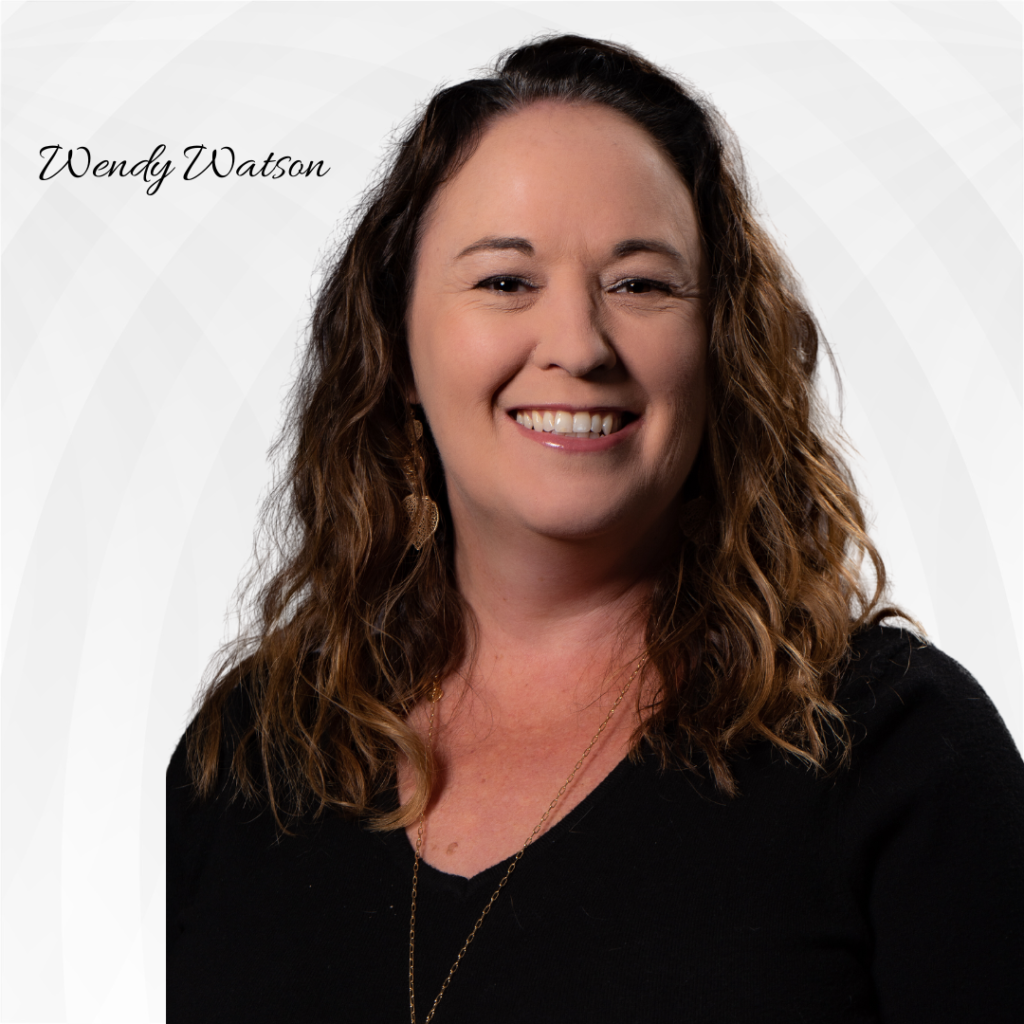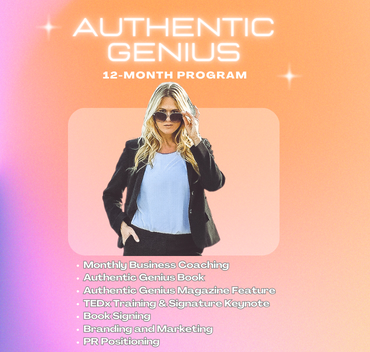By Wendy Watson
Money often stands at the intersection of power, possibility, and profound emotional weight—especially for women determined to shape their own destinies. While the global landscape has opened doors for women entrepreneurs, executives, and leaders, too many of us still find our financial lives entangled in guilt, fear, or limitation. This article invites you to step into a “love legacy” relationship with money—one where every interaction you have with finances is rooted in self-worth, compassion, and forward-thinking stewardship.
By establishing a love legacy with money, you transform your finances from a mere transactional tool into a source of empowerment that nurtures personal well-being, enriches your community, and paves the way for future generations. We’ll delve into six key subcomponents of our financial relationship—receiving, spending, saving, debt, investing, and loss—and explore how each can evolve into an expression of love, gratitude, and meaningful legacy building.
The Influence of Mindset, Emotions, and Community
Before examining the subcomponents in detail, it’s important to acknowledge the factors that shape our financial experiences.

These include:
- Mindset: Our internal beliefs about money, shaped by upbringing, cultural narratives, and personal successes or setbacks.
- Emotions: Feelings such as fear, excitement, shame, or pride that often trigger financial behaviors (e.g., impulsive spending or strategic saving).
- Community Projections: The attitudes of family, friends, mentors, or colleagues can subtly (or overtly) color how we view earning, spending, or investing.
- Judgments and Trauma: Past financial failures or difficulties may leave emotional scars, influencing our current money habits.
- Love and Gratitude: When we ground our financial decisions in appreciation for what money can enable—and in love for ourselves and our communities—we build a stronger, more holistic connection to our finances.
Recognizing these influences is vital for creating a love legacy. A legacy isn’t just what you leave behind when you retire or depart this world; it’s how you use and steward your resources every single day. By weaving love and gratitude into each financial decision, you not only improve your own life but also set a positive example that resonates far beyond yourself.
1. Receiving: Establishing Worthiness for a Love Legacy
The starting point for any loving, enduring relationship with money is receiving. At its core, receiving is about acknowledging your worthiness to attract and hold onto resources—both tangible and intangible. It’s giving yourself permission to accept the abundance you deserve.

Challenging Worthiness Blocks
For many women, deeply ingrained messages can create blocks around earning and receiving. Perhaps you were told that asking for a pay raise is “pushy,” or that setting high prices for your services is “unfeminine” or “greedy.” These narratives do more than hinder financial growth; they also stifle a sense of self-love.
Transforming these beliefs requires conscious effort. Affirmations like “I am worthy of the money I earn” or “I welcome financial abundance into my life with gratitude” may feel awkward at first, but consistent practice starts to rewire your mindset. Notice how this shift isn’t solely about money; it’s also about honoring your intrinsic value and letting love inform your self-perception.
Emotional Readiness for Receiving
Emotions such as guilt, fear, and shame can lurk in the background, particularly if you’ve struggled financially or seen loved ones wrestle with debt. A love legacy means recognizing these emotions without letting them dictate your outcomes. Ask yourself: “What would love have me do?” Would love have you deny your business the revenue it needs to grow? Would love have you undercharge and overwork yourself?
By continually aligning your mindset with the positive intent of serving clients, supporting your community, and building stability for your family, you shift from an anxious or guilty stance to one of openness and gratitude. This fundamental shift in receiving sets the tone for all other financial subcomponents.
2. Spending: Flowing Resources Where Love and Values Intersect
Spending is the next subcomponent—where money flows out from you into the world. Often, spending is framed negatively, as if it’s antithetical to saving or investing. But in a love legacy framework, spending becomes an act of alignment and generosity.
Conscious vs. Compulsive Spending
- Conscious Spending: This involves directing money toward what genuinely supports your growth, well-being, or vision. Investing in a course to enhance your leadership skills or purchasing high-quality tools for your business can both be expressions of self-love and future legacy building.
- Compulsive Spending: In contrast, emotional or unplanned spending—trying to fill a void or numb stress—typically leaves you feeling regretful or anxious. By distinguishing between the two, you maintain a healthy, loving relationship with your financial resources.
Values-Driven Purchases
A key element of a love legacy involves spending in ways that align with your principles. Perhaps you choose to buy from women-owned businesses, or you donate to charities that reflect your desire for social change. By letting love guide your spending decisions, you transform everyday transactions into purposeful contributions that mirror your core values.
Emotional Triggers and Community Influences
Pressure from family or friends can sway your spending habits in ways that may not serve your best interest. A cousin might mock you for not indulging in lavish outings, or a friend might encourage excessive shopping. Cultivating a love legacy means having the self-confidence to spend according to your own vision—something that becomes simpler once you’re comfortable with receiving. You know your money is meant for greater things than just appeasing fleeting social pressures.
3. Saving: Safeguarding Your Future, Nurturing Your Community
Saving forms the bedrock of financial resilience, ensuring that you can weather uncertainties and eventually invest in opportunities that amplify your impact. From a love legacy perspective, saving isn’t about hoarding; it’s about creating a secure foundation so that you can continue to pour into your life’s work, your loved ones, and your community.
Emotional Barriers to Saving
Some individuals associate saving with restriction or “stinginess,” fearing that setting money aside means they can’t enjoy life’s pleasures. In a legacy-focused mindset, saving becomes an act of self-care and future care. You’re not depriving yourself; you’re safeguarding your loved ones and your own long-term ability to thrive.
The Love Aspect of Saving
When you save out of love for yourself, your family, and your future, you begin to see each deposit into your savings or emergency fund as an expression of devotion. This reframing diminishes any guilt or anxiety about not spending on immediate desires. It also adds a layer of motivation to see your balance grow—because every dollar signifies another piece of the legacy you’re building.
Practical Saving Strategies
- Automate Saving: Schedule automatic transfers to a separate savings account. This ensures consistency and mitigates the temptation to spend first.
- Diversify Savings Goals: One account for emergency funds, another for significant investments, and yet another for personal or family milestones.
- Celebrate Milestones: Track your progress and reward yourself when you reach certain savings thresholds. This positive reinforcement keeps the love-based momentum going.
4. Debt: Harnessing or Healing to Uphold Your Legacy
Debt can be both a powerful tool and a source of deep emotional stress. Within a love legacy framework, debt is approached neither with naivety nor with guilt-ridden dread. Instead, it’s evaluated and managed through clear, compassionate discernment.
Healthy vs. Unhealthy Debt
- Healthy Debt: Borrowing strategically to fund business expansions, purchase property, or invest in advanced skills that increase your earning power. These moves can enrich your future, turning debt into leverage rather than liability.
- Unhealthy Debt: High-interest credit cards or loans taken on impulse can lead to a vicious cycle of stress and financial instability. If you feel deep shame or anxiety around such obligations, it’s important to confront these feelings head-on.
Love and Forgiveness
If your debt situation stems from past mistakes, acknowledging those errors is necessary, but so is extending self-love and forgiveness. Mistakes are part of growth. Instead of wallowing in regret, channel your energy into a strategic repayment plan. Making consistent payments—even small ones—exemplifies self-respect and commitment to financial health.
Strategies for a Loving Debt Management
- Know Your Numbers: Gather all details—interest rates, total amounts, minimum payments—to dispel uncertainty or denial.
- Consolidate if Possible: Explore opportunities to combine high-interest debt into a single, lower-interest loan.
- Set a Timeline: Establish clear repayment goals, whether short-term or long-term, that reflect both practicality and ambition.
- Mindset Check-Ins: Regularly remind yourself why you chose this path. For instance, if the debt helped you launch a business that aligns with your passion, reaffirm how this debt is part of your love legacy journey.

5. Investing: Expanding Your Legacy
Investing is where the seeds of your financial resources can truly blossom into a lasting legacy. By committing portions of your money to businesses, stocks, properties, or other ventures, you create opportunities for growth that can significantly augment your financial footprint. However, the emotional and cultural baggage around investing—fear of loss, lack of confidence, or judgments about “greed”—can deter many women from harnessing its potential.
Overcoming Emotional Barriers
You may have heard horror stories of market crashes or personal bankruptcies that instill fear. Alternatively, voices around you might label investing as risky or even unethical if it’s associated with big corporations. A love legacy approach neutralizes these judgments by focusing on alignment and consciousness:
- Align with Values: Socially responsible investing, angel investments in women-led startups, or sustainable funds allow you to merge ethical considerations with financial returns.
- Educate Yourself: Continuous learning fosters confidence. Whether through online courses, financial mentors, or reading material, knowledge empowers you to make decisions that resonate with both your wallet and your conscience.
Expanding Your Community Impact
Investing also enriches your community and future generations. For example, if you invest in a local startup, you support entrepreneurship in your area while potentially realizing gains that can later fund philanthropic endeavors or your family’s future education. This cyclical flow of money is a quintessential expression of love legacy—money doesn’t stagnate; it circulates, grows, and uplifts multiple layers of society.
Strategies for a Loving Investment Approach
- Long-Term Perspective: Avoid reacting impulsively to market fluctuations. A calm, measured approach mitigates stress and maintains focus on bigger, legacy-oriented goals.
- Diversification: Spread investments across various asset classes—such as stocks, bonds, real estate, or your own ventures—to reduce risk.
- Trust Your Instincts + Research: Blend logic and intuition. Investigate opportunities thoroughly, but also heed that inner knowing that might guide you toward or away from certain investments.
6. Loss: Transforming Setbacks into Sacred Lessons
Finally, we address loss, a subcomponent that can overshadow all other aspects of money if left unchecked. Loss can manifest as business revenues declining, an investment flopping, or personal savings depleted by sudden medical bills. It’s here that a love legacy approach is most profoundly tested and ultimately proven.
Emotional Weight of Financial Loss
Loss can trigger profound shame, grief, or self-doubt. You may question your capabilities, fear future risks, or even develop resentment toward money. However, in a framework oriented around love and legacy, you begin to see loss not as a definitive statement on your worth but as a catalyst for renewal.
Reframing Loss with Love
- Self-Compassion: Just as you would console a friend who faced a setback, extend the same kindness to yourself. Reflect on what you did learn—decision-making, risk assessments, or resilience.
- Lesson Extraction: Every financial setback offers wisdom. If an investment collapsed, what can you learn about timing, diversification, or aligning with your core values? Use these lessons to strengthen your future decisions.
- Continued Connection to Receiving: Loss can cause people to clamp down and block new opportunities. Remind yourself that your capacity to receive still exists. The door to abundance hasn’t closed; it’s simply inviting you to step through it with new insights.
Legacy Beyond Loss
When you face loss head-on, anchored in love and gratitude, your energy shifts from despair to reconstruction. You might develop better strategies for saving and investing. Perhaps you’ll mentor other women to avoid similar pitfalls. Loss, in this sense, becomes a sacred teacher that refines your expertise and bolsters the love you have for your mission and community.
Integrating the Six Subcomponents into a Love Legacy Framework
Creating a love legacy with money isn’t about sporadic good luck or the perfect financial plan. It’s a continuous, evolving process in which each subcomponent—receiving, spending, saving, debt, investing, and loss—interacts and informs the others.
- Receiving as a Foundation: When you open your heart to receiving, you acknowledge your innate worth and eliminate barriers that once held you back from opportunities.
- Spending with Purpose: By directing money toward values, you ensure each dollar carries an emotional and societal benefit beyond just fulfilling a momentary need.
- Saving for Stability and Vision: A robust savings practice empowers you to respond to emergencies, invest in cherished projects, and maintain peace of mind, all grounded in self-love.
- Debt as a Strategic Ally: Even debt becomes manageable when approached with transparency, purpose, and compassion for past choices.
- Investing for Growth and Impact: Your finances can become a vehicle for social, environmental, and personal progress, reflecting the generosity and foresight of your legacy mindset.
- Loss as a Teacher: Rather than allowing it to derail your progress, loss provides invaluable insights, pushing you to sharpen your strategies and strengthen your commitment to love and legacy.
As you integrate these six subcomponents under the umbrella of love, you begin to see that money is more than a means to an end. It’s a dynamic resource that can uplift your spirit, champion your causes, and bolster communities near and far.

Practical Tips for Women Leaders and Entrepreneurs
- Regular Financial Check-Ins: Schedule monthly or quarterly reviews of your income, spending, savings, debt status, and investment performance. Approach these sessions with curiosity and self-compassion.
- Create a Values-Based Budget: Let your guiding principles (e.g., environmental sustainability, women’s empowerment, innovation) shape your allocation of funds.
- Embrace Mentorship and Community: Seek out or create a network of like-minded women who want to build a love legacy with money. Sharing successes and setbacks fosters growth and camaraderie.
- Practice Gratitude: Start or end each day with a thought of gratitude for what money has enabled you to do—whether it’s securing your home, funding a child’s education, or simply treating yourself to a comforting experience.
- Mindful Celebration: When you achieve milestones—such as paying off a debt or seeing returns on an investment—pause to celebrate. Recognize the blend of love, discipline, and courage that brought you there.
Conclusion: Embracing Your Legacy of Love and Financial Empowerment
By weaving a love legacy into each dimension of your relationship with money, you transform something often seen as purely transactional into a profound source of empowerment and connection. You redefine the role money plays, seeing it as an ally that can amplify your vision, nurture your community, and leave a meaningful imprint on the world. Each subcomponent—receiving, spending, saving, debt, investing, and loss—becomes another chance to practice self-love, gratitude, and future-building.
Women who embrace this perspective move with confidence and authenticity in all financial arenas. They negotiate their salaries and prices with the understanding that they are worthy. They spend and invest intentionally, knowing each dollar is an opportunity to shape their reality and the realities of others. They save out of a loving commitment to their peace of mind, and they view debt judiciously, honoring both its potential and its risks. Even loss, in their eyes, evolves from a deterrent into a powerful mentor.
This empowered approach isn’t just for the elite few; it’s available to every woman, regardless of her financial history or current resources. By building a love legacy relationship with money, you honor yourself, your dreams, and the generations of women who have come before and will come after. May this journey inspire you to harness your financial power with grace, compassion, and unwavering resolve, forging a path that not only elevates your life but also illuminates the way for others.






